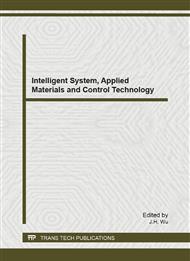[1]
B. Bhushan, A. Kulkarni and V.N. Koinkar: Langmuir Vol. 11 (1995), P. 3189.
Google Scholar
[2]
M. Masuko, H. Miyamoto and A. Suzuki: Tribol. Int. Vol. 40 (2007), P. 1587.
Google Scholar
[3]
C. Boozer, J. Ladd, S. Chen, Q. Yu, J. Homola and S. Jiang: Anal. Chem. Vol. 76 (2004), P. 6967.
Google Scholar
[4]
L. Li, S. Chen, J. Zheng, B.D. Ratner and S. Jiang: Journal of Physical Chemistry Vol. 109 (2005), P. 2934.
Google Scholar
[5]
E.S. Gawalt, M.J. Avaltroni, M.P. Danahy, B.M. Silverman, E.L. Hanson, K.S. Midwood, J.E. Schwarzbauer and J. Schwartz: Langmuir Vol. 19 (2003), P. 200.
DOI: 10.1021/la0203436
Google Scholar
[6]
G. -J. Zhang, T. Tanii, T. Miyake, T. Funatsu and I. Ohdomari: Thin Solid Films Vol. 452 (2004), P. 464.
DOI: 10.1016/j.tsf.2004.06.057
Google Scholar
[7]
G. Mani, D.M. Johnson, D. Marton, M.D. Feldman, D. Patel, A.A. Ayon and C.M. Agrawal: Biomaterials Vol. 29 (2008), P. 4561.
DOI: 10.1016/j.biomaterials.2008.08.014
Google Scholar
[8]
W.R. Ashurst, M.P. de Boer, C. Carraro and R. Maboudian: Applied Surface Science. Vol. 212 (2003), P. 735.
DOI: 10.1016/s0169-4332(03)00093-x
Google Scholar
[9]
H. Wanga, R. Liub, W. Q. Jianga, J. Zhua, J. Z. Fenga, G. F. Dinga and X. l. Zhao: Applied Surface Science. Vol. 257 (2011), P. 2203.
Google Scholar
[10]
W.C. Tian, J.Y. Jia and G.Y. Chen: Sensing and Control. Vol. 06 (2006), P. 1096.
Google Scholar
[11]
M.P. Larsson, R.R.A. Syms and A.G. Wojcik: Journal of Micromechanics and Microengineering. Vol. 16 (2005), P. (2074).
Google Scholar
[12]
A.N. Parikh, D.L. Allara, I.B. Azouz and F. Rondelez, Journal of Physical Chemistry Vol. 98 (1994), P. 7577.
Google Scholar
[13]
C. Carraro, O.W. Yauw, M.M. Sung and R. Maboudian: Journal of Physical Chemistry B Vol. 102 (1998), P. 4441.
Google Scholar
[14]
T. Balgar, R. Bautista, N. Hartmann and E. Hasselbrink: Surface Science Vol. l532 (2003) P. 963.
Google Scholar
[15]
G. Mani, D.M. Feldman, O. Sunho and C.M. Agrawal: Applied Surface Science Vol. 255 (2009), P. 5961.
Google Scholar
[16]
S. Sundararajan and B. Bhushan: Wear. Vol. 217 (1998), P. 251.
Google Scholar


